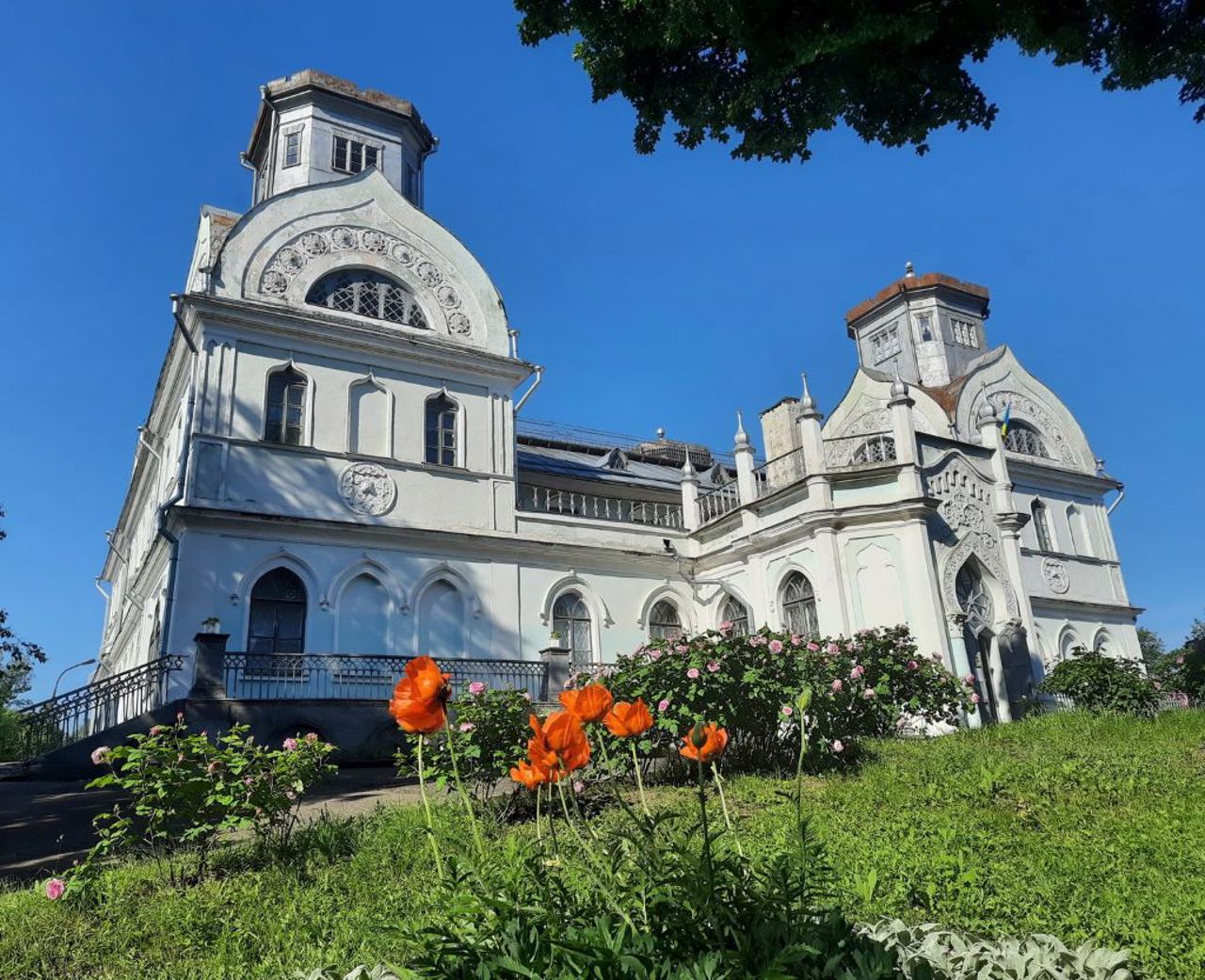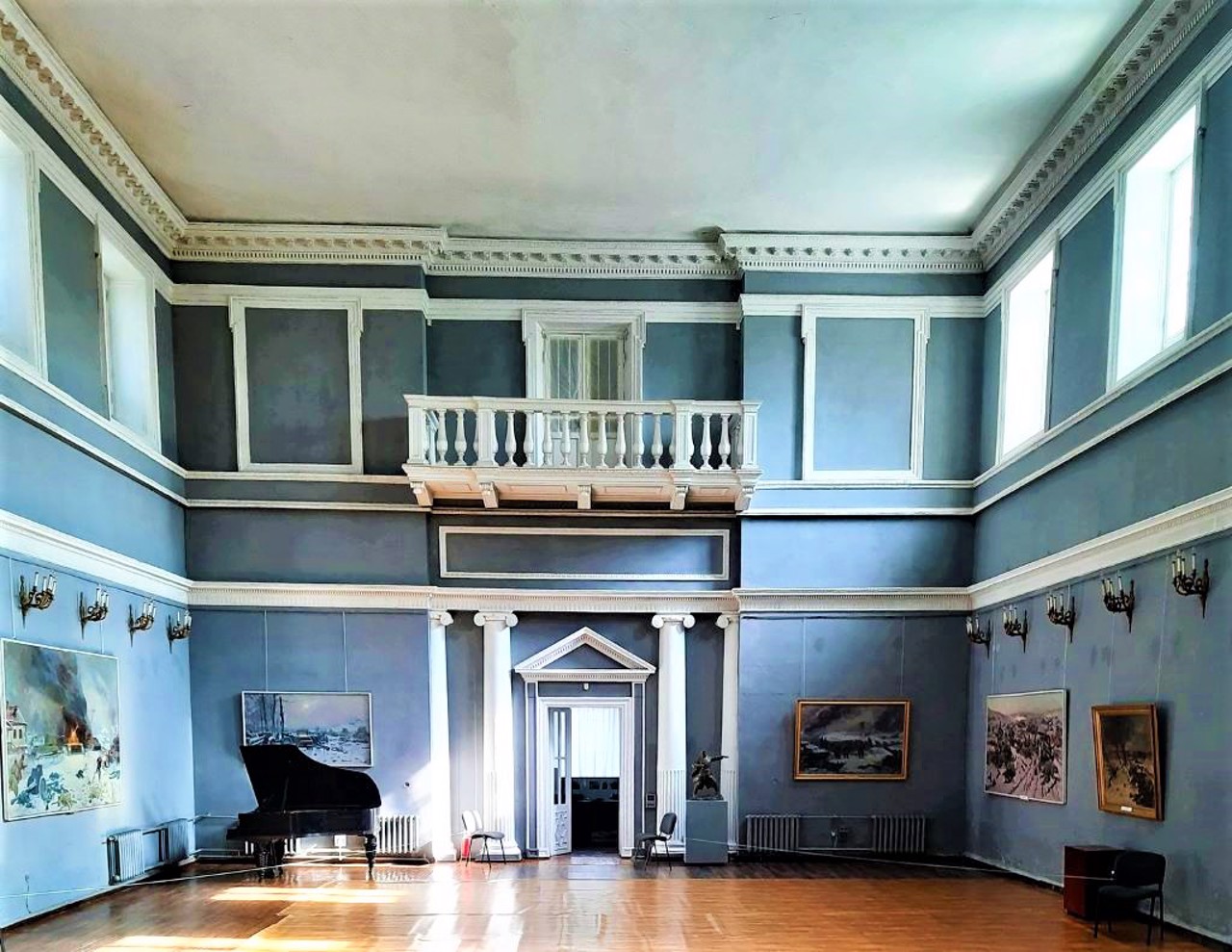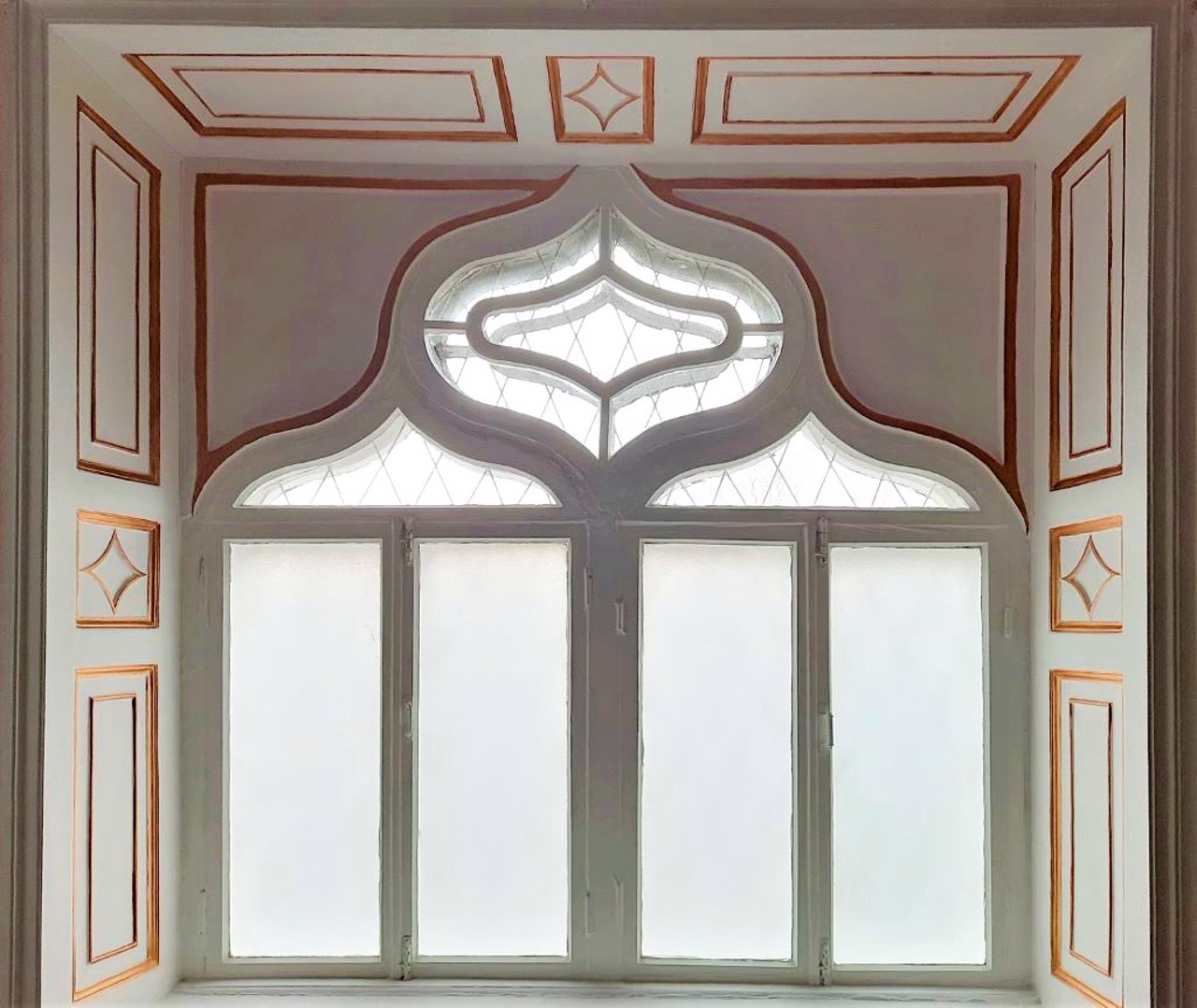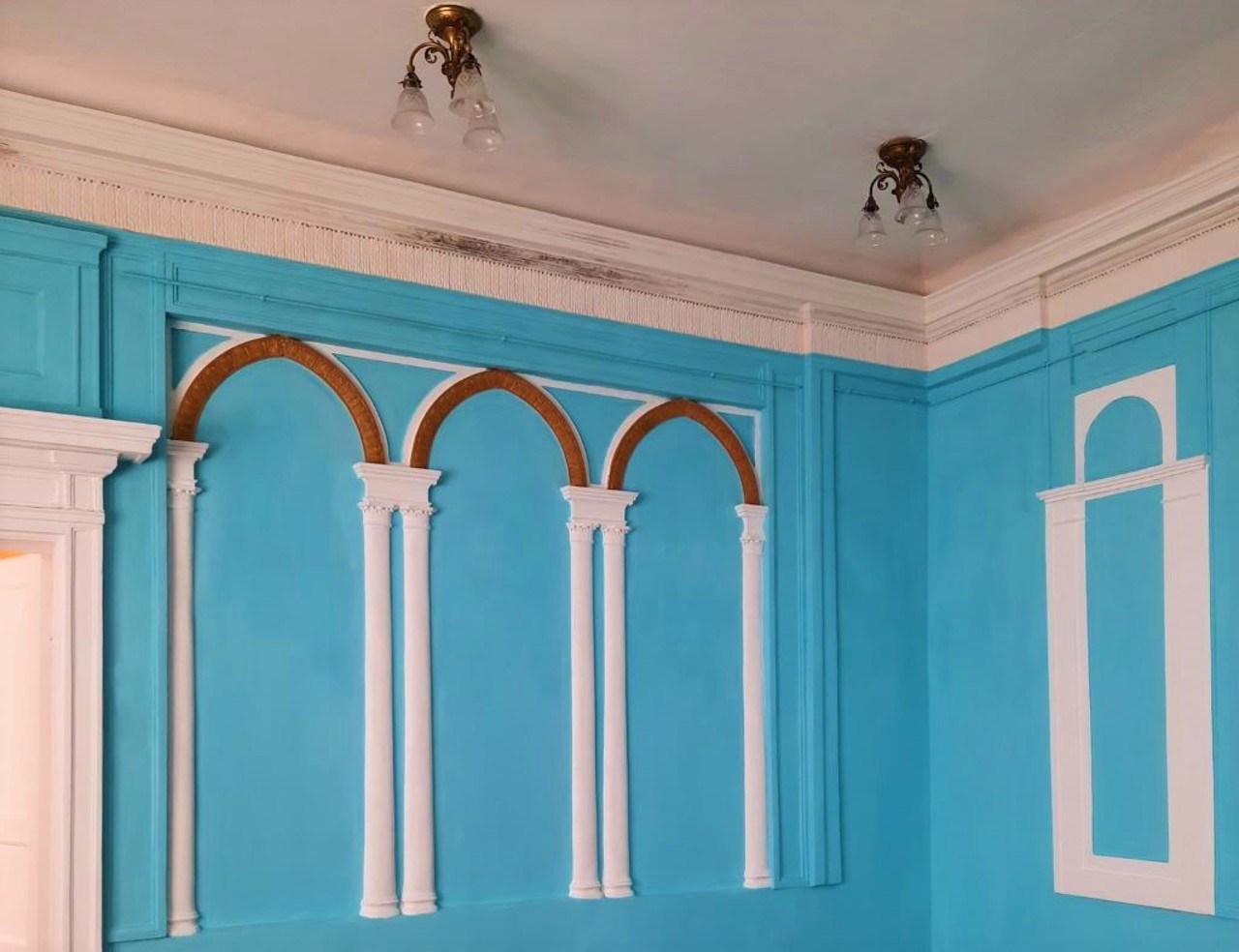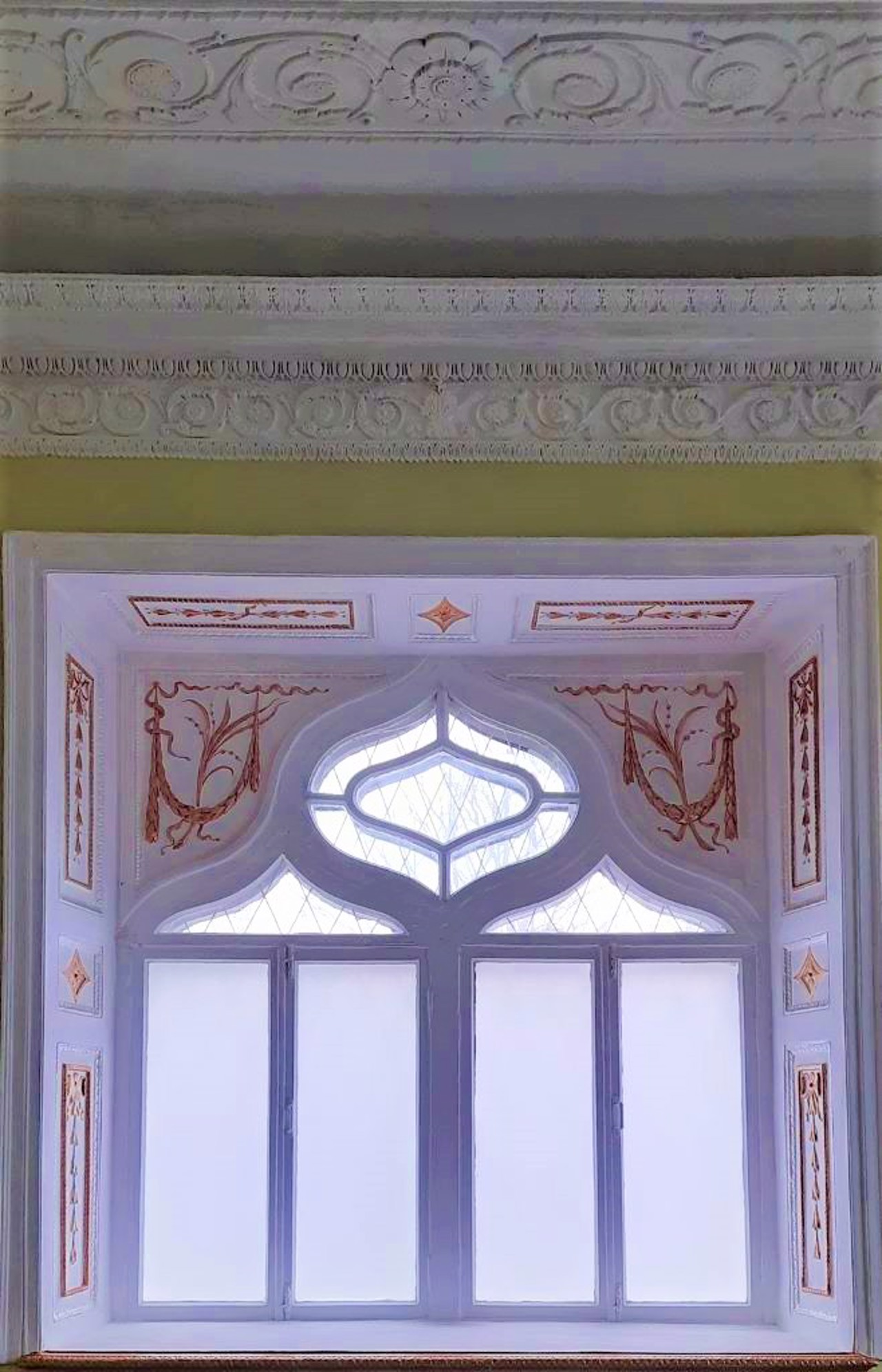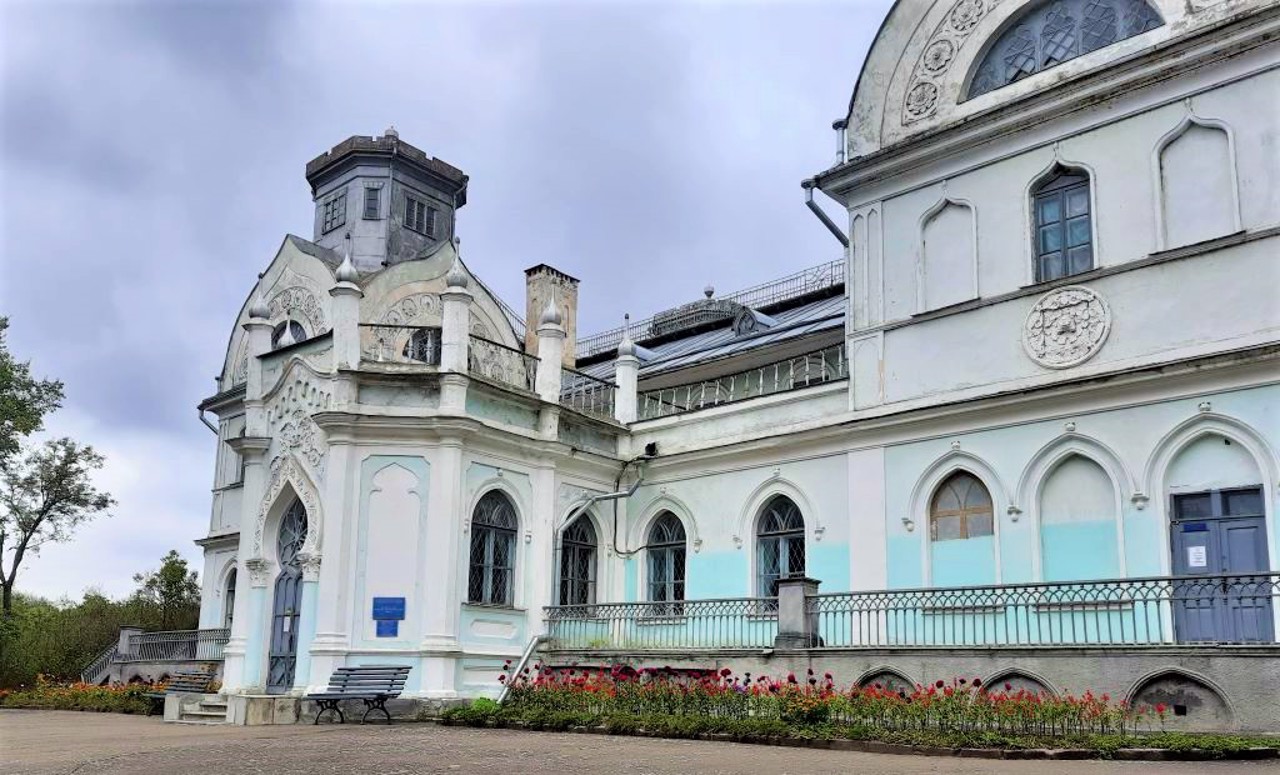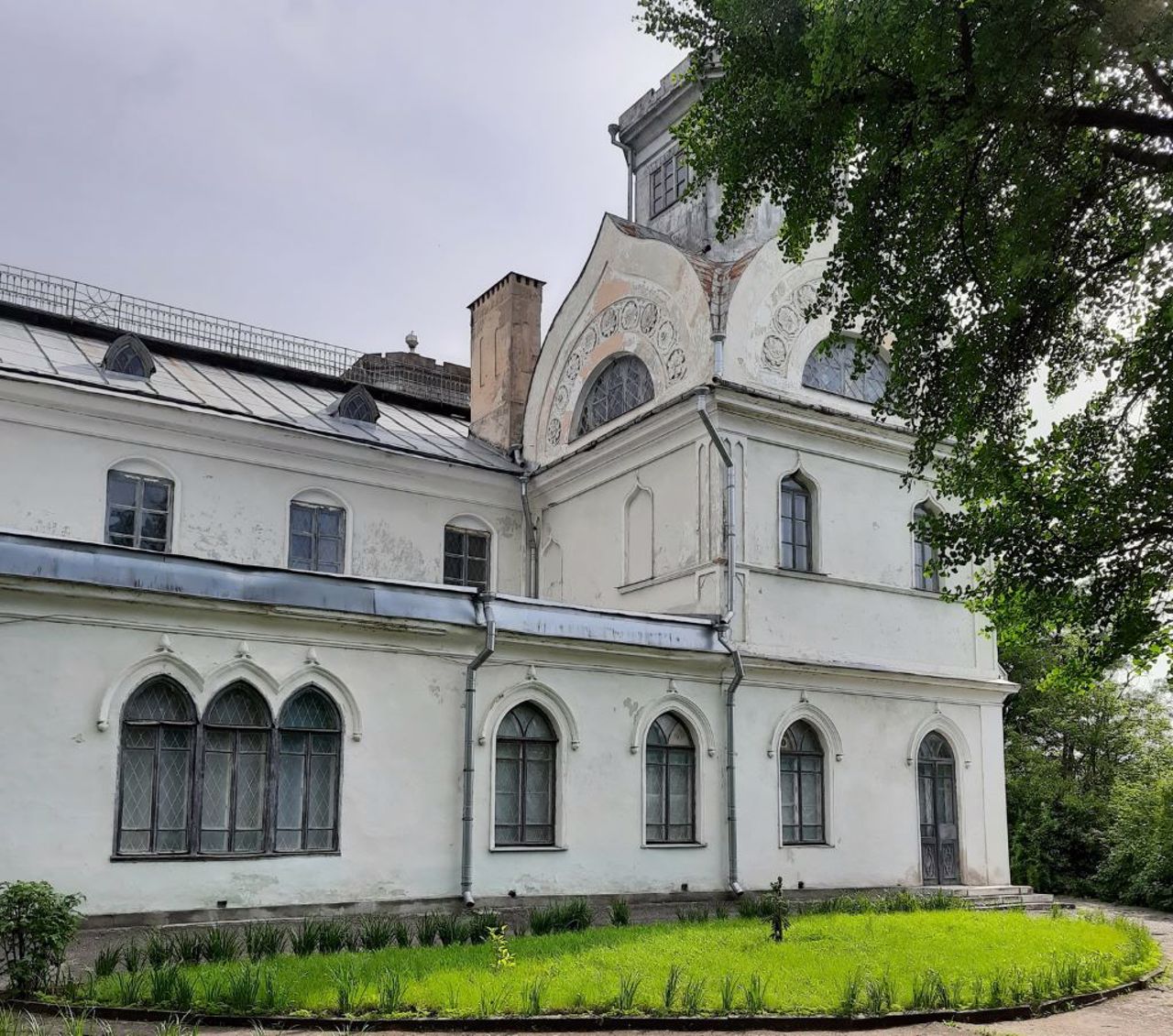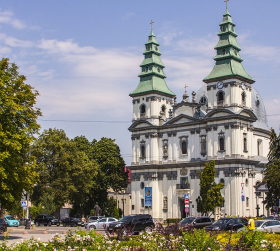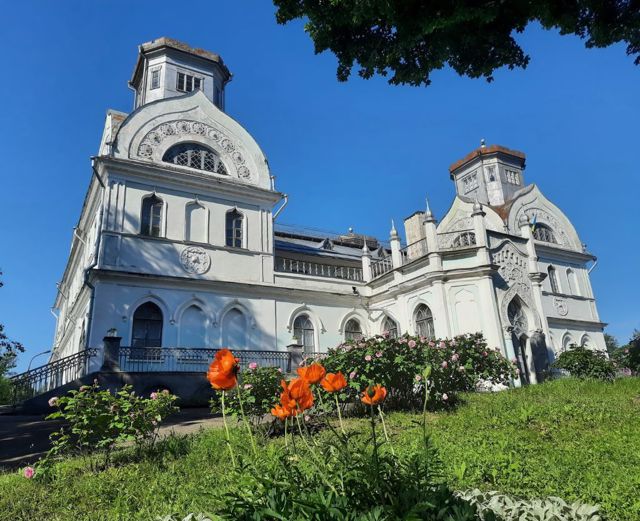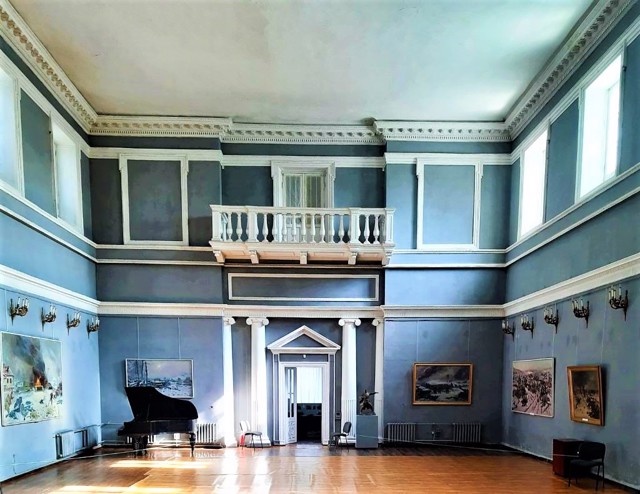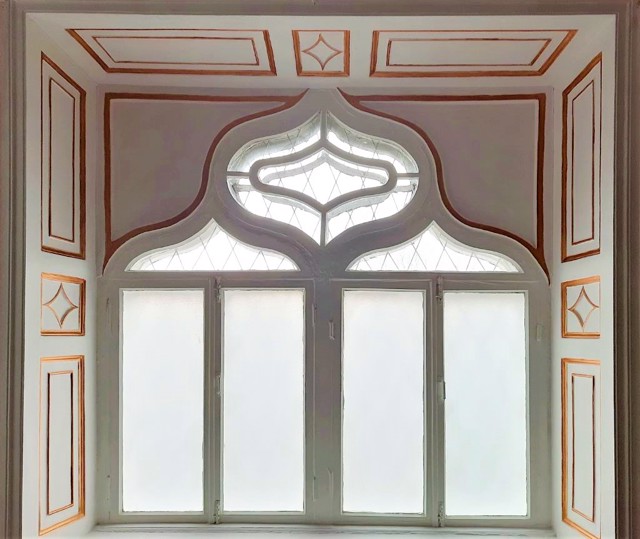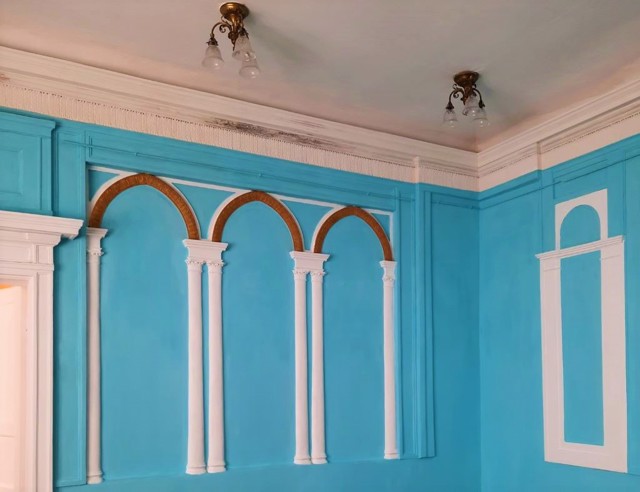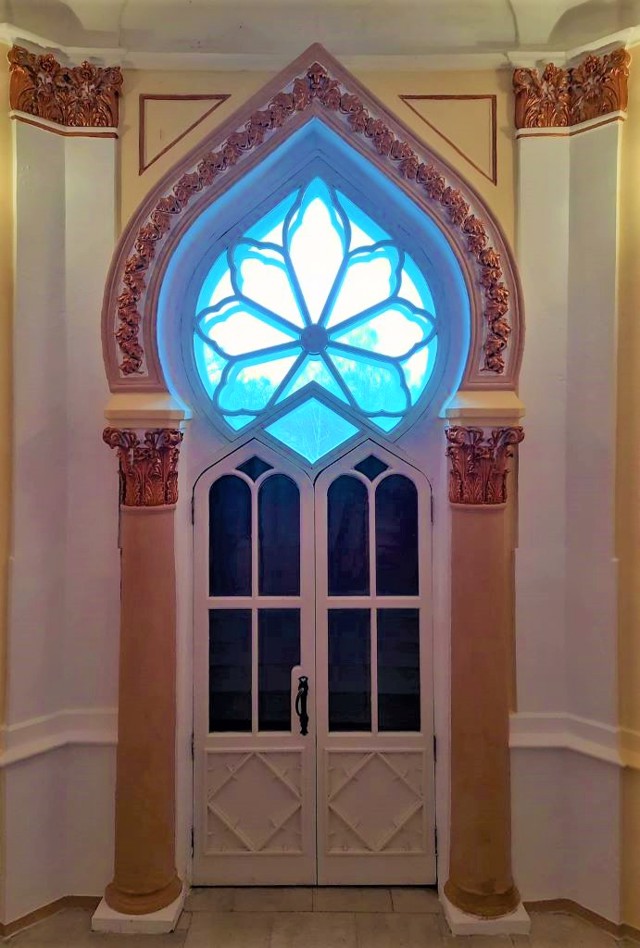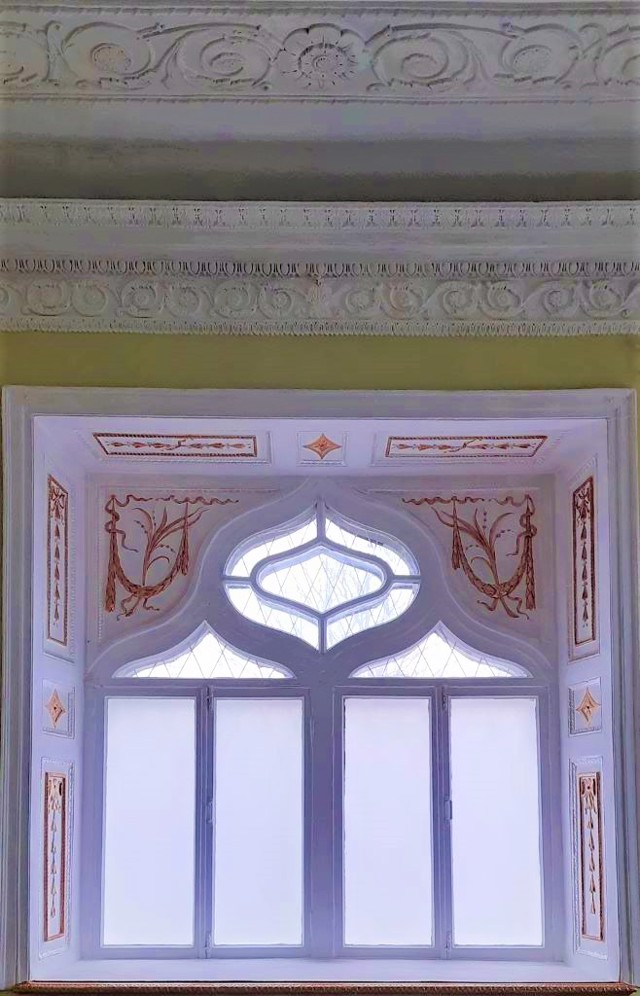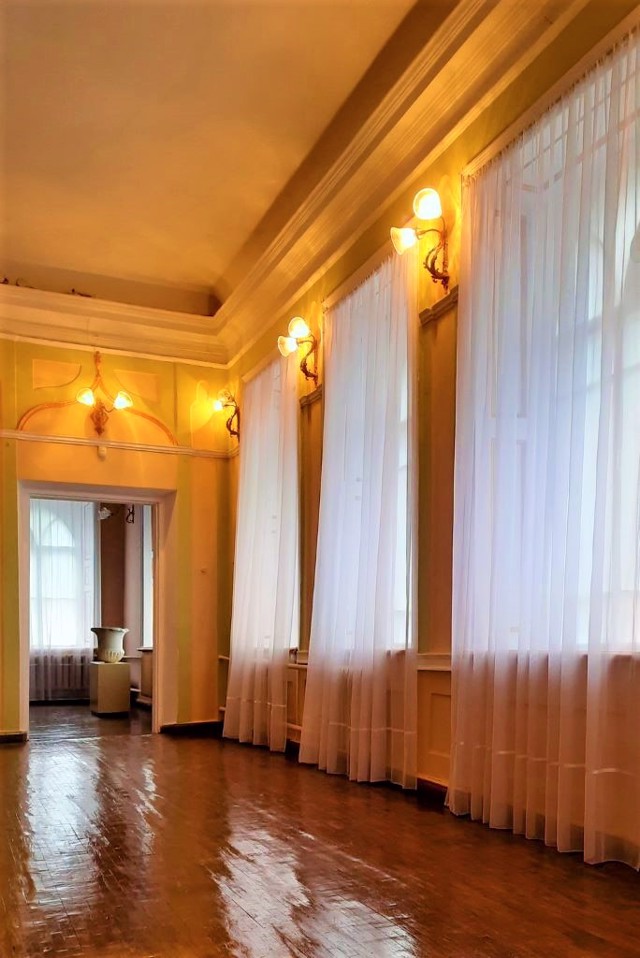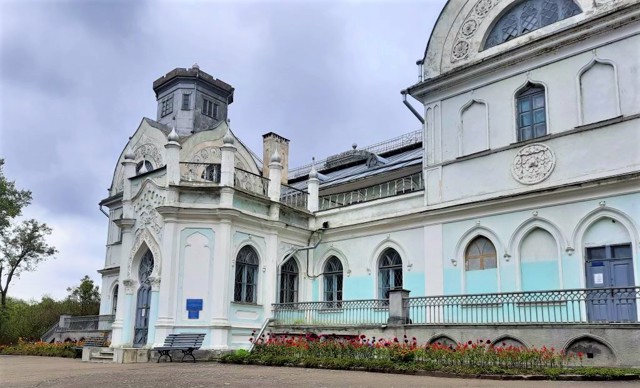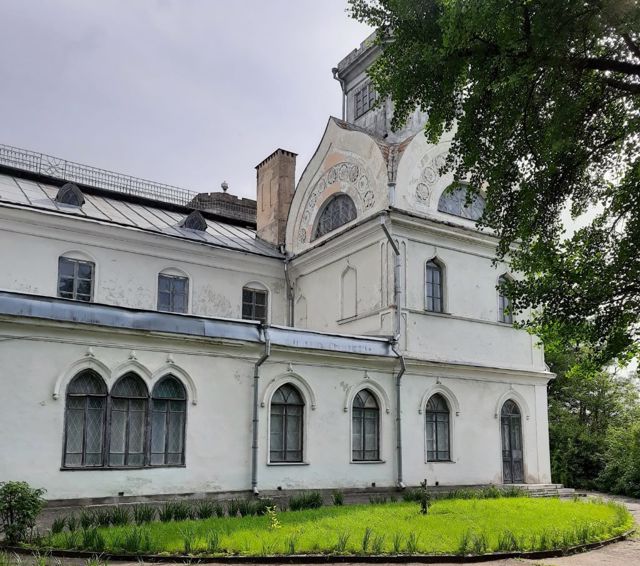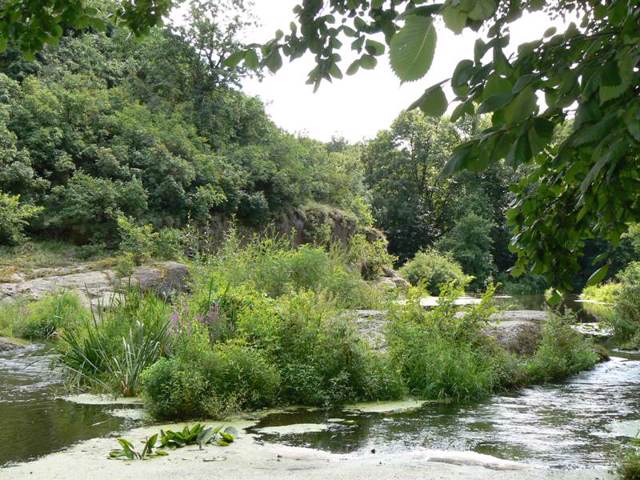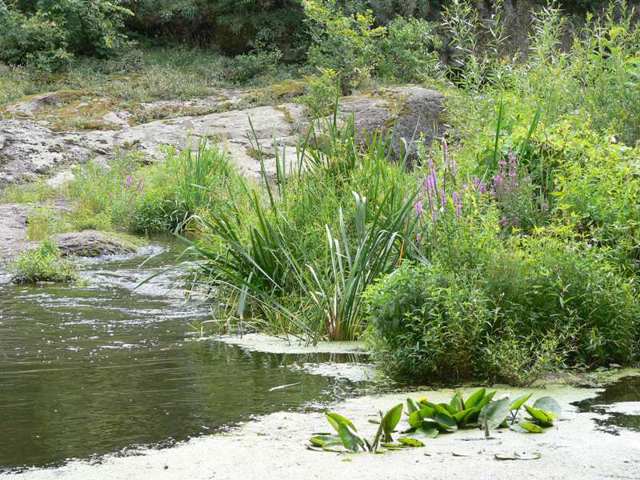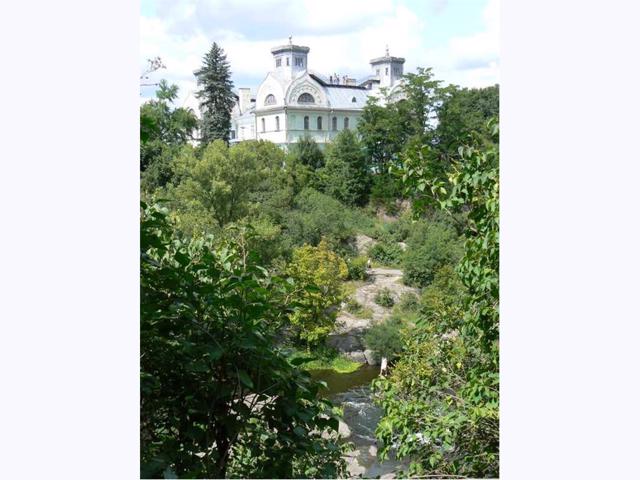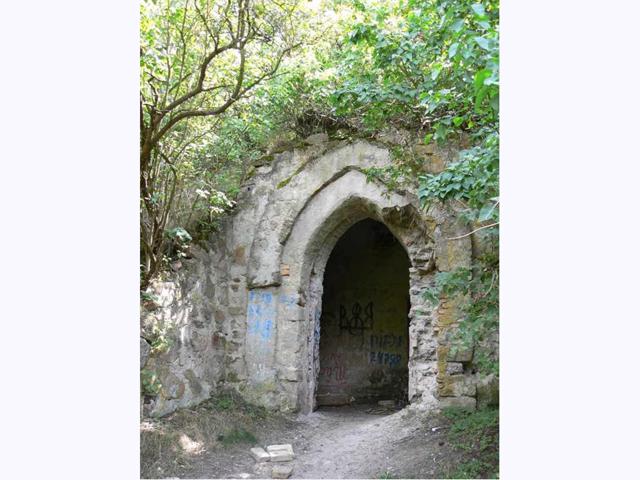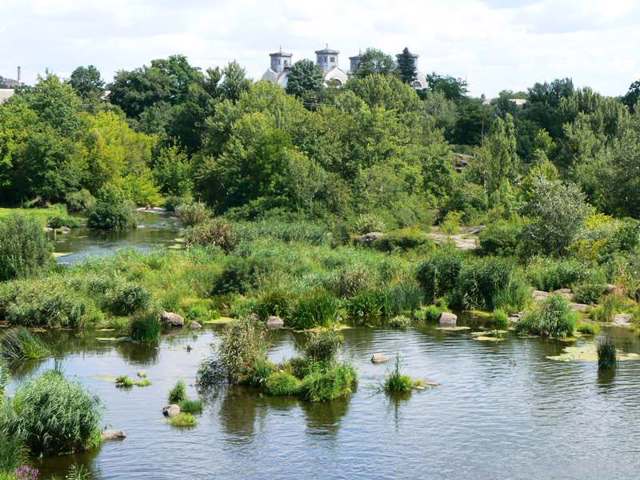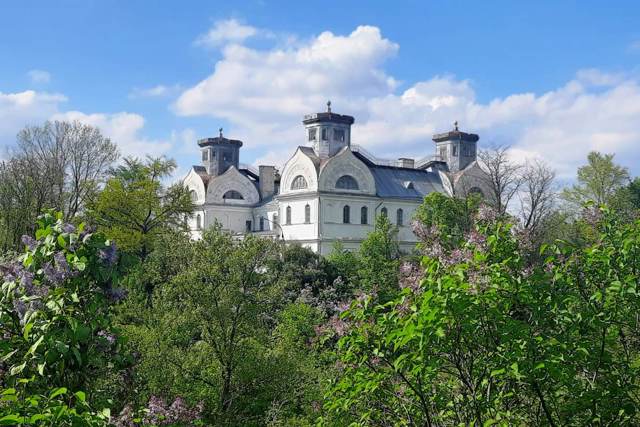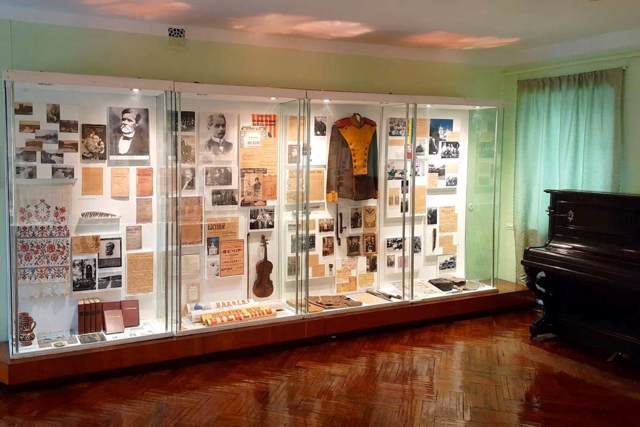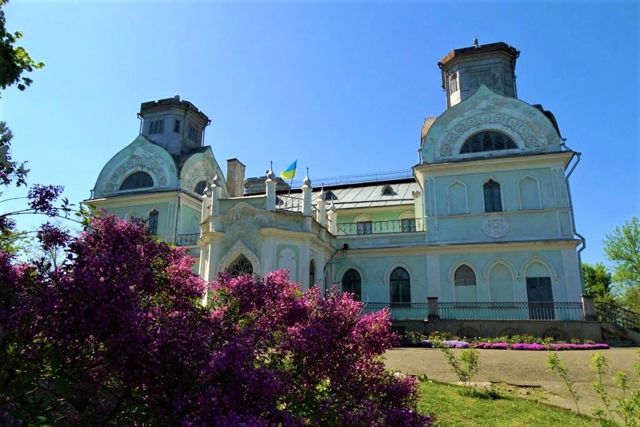Functional temporarily unavailable
Attractions of Ukraine
Attractions region
Attractions Cherkasy region
Attractions Cherkasy district
Attractions Korsun-Shevchenkivskyi
Stanislav Ponyatovsky Palace
Stanislav Ponyatovsky Palace, Korsun-Shevchenkivskyi
Palace / manor
Architecture
Museum / gallery
General information about Stanislav Ponyatovsky Palace (Korsun-Shevchenkivskyi)
The palace and park complex in Korsun, on the islands in the middle of the Ros River, was founded in 1782 by Prince Stanislav Ponyatovsky as his own summer residence.
The Ponyatovsky Palace was built in 1787-1789 on the basis of the old Polish fortress of the Vyshnevetsky princes, who in turn were created on the site of the Ancient Rus Korsun settlement. The project of the palace in the neo-Gothic style was developed by architects Zhan-Anri Myunts and Yan Lindsey.
The new owner, Prince Pavlo Lopukhin, significantly changed its architecture in the middle of the 19th century, giving it features of Russian romanticism with elements of neo-Gothic and classicism. The last owners of the Korsun estate were the Lopukhin-Demidov princes.
After the Bolshevik coup of 1917, t ...
The palace and park complex in Korsun, on the islands in the middle of the Ros River, was founded in 1782 by Prince Stanislav Ponyatovsky as his own summer residence.
The Ponyatovsky Palace was built in 1787-1789 on the basis of the old Polish fortress of the Vyshnevetsky princes, who in turn were created on the site of the Ancient Rus Korsun settlement. The project of the palace in the neo-Gothic style was developed by architects Zhan-Anri Myunts and Yan Lindsey.
The new owner, Prince Pavlo Lopukhin, significantly changed its architecture in the middle of the 19th century, giving it features of Russian romanticism with elements of neo-Gothic and classicism. The last owners of the Korsun estate were the Lopukhin-Demidov princes.
After the Bolshevik coup of 1917, the estate miraculously survived, surviving to this day almost unchanged. The famous silhouette of the Ponyatovsky Palace is created by the keel-shaped kokoshniks, above which the belvedere towers rise. Nearby is a large three-story outbuilding (1782-1783), which was connected to the palace by the Order Gallery. The entrance gate in the form of French defensive architecture was built in the middle of the 19th century (there is a cafe in the basement). Other manor buildings have been preserved: the service building, the "Swiss house", the Orthodox chapel.
Most of Kotsyubynsky Island is now occupied by a luxurious landscape park (area of 100 hectares, 80 species of trees and shrubs) with bridges, gazebos, sculptures and a romantic grotto. It is especially beautiful in the spring, when the lilac is blooming.
In Soviet times, the exhibition of the museum of the history of the Korsun-Shevchenkivskyi battle was placed in the premises of the Ponyatovsky Palace. An exhibition of military equipment was on display in the square in front of the palace. In April 2022, at a meeting of the Scientific and Methodological Council of the Korsun-Shevchenkivskyi Reserve, a decision was made to dismantle the exposition of the museum of the history of the Korsun-Shevchenkivskyi Battle and change its name to the "Military Museum" with the creation of a new exposition in the Ponyatovsky Palace.
The new exposition presents the works of artists of different times and different directions, styles, and techniques. These are, in particular, the works of unknown Italian sculptors of the 18th century (at one time they decorated the palace), the Italian engraver Domeniko Kuneho, the Ukrainian artist Ivan Soshenko, the Italian sculptor Luyidzhi Yorini, the Hungarian artist Syhizmund Bubiks, a lithograph from the work of a Polish artist of Ukrainian origin, Yuliush Kossak, works local artist Herontiy Bondarenko and Ukrainian artists of the 20th-21st centuries Mykola Prokopenko, Borys Fedorenko, Serhiy Shyshko, Andriy Chebykin, Serhiy Dupliy, Oksana Tymkiv.
You can also see the palace projects of the palace and the palace ensemble, the originals of which are kept in the Cabinet of Drawings of the Library of the University of Warsaw; photos of the interiors of the palace from the end of the 19th - beginning of the 20th century; copies of drawings and lithographs of the 18th and 19th centuries, in particular, by Zhan-Anri Myunts, the Polish artist Napoleon Horda, Vanicek, the French lithographers Fransua-Zhozef Dyupresuar and Yevheniy Hyuho, the Polish artist Adolf Kozarsky.
Porcelain and ceramics from the collection of Canadian citizen Olena Berykul-Kryvoruchko, representing 20 countries of the world, is exhibited in a separate hall. Most products are from England, Japan, China, Italy, Germany, USA, France. A separate hall is also dedicated to sacred art, where, among other icons, the icon of the icon painter Hryhori Stetsenko, the father of the composer Kyrylo Stetsenko, and icons restored by the artist and icon painter Oksana Tymkiv will be presented.
The exposition include museum objects of everyday life, which characterize the era of the 18th - 19th centuries.
Палацово-парковий комплекс у Корсуні, на островах посеред річки Рось, заснував у 1782 році князь Станіслав Понятовський як власну літню резиденцію.
Палац Понятовського було збудовано в 1787-1789 роках на основі старої польської фортеці князів Вишневецьких, що у свою чергу створювалася на городищі давньоруського Корсуня. Проєкт палацу в стилі неоготики розробили архітектори Жан-Анрі Мюнц та Ян Ліндсей.
Новий власник палацу князь Павло Лопухін в середині ХІХ століття значно змінив його архітектуру, надавши йому рис російського романтизму з елементами неоготики та класицизму. Останніми власниками корсунської садиби були князі Лопухіни-Демидови.
Після більшовицького перевороту 1917 року садиба дивом збереглася, донині дожила майже без змін. Відомий силует палацу Понятовськ ...
Палацово-парковий комплекс у Корсуні, на островах посеред річки Рось, заснував у 1782 році князь Станіслав Понятовський як власну літню резиденцію.
Палац Понятовського було збудовано в 1787-1789 роках на основі старої польської фортеці князів Вишневецьких, що у свою чергу створювалася на городищі давньоруського Корсуня. Проєкт палацу в стилі неоготики розробили архітектори Жан-Анрі Мюнц та Ян Ліндсей.
Новий власник палацу князь Павло Лопухін в середині ХІХ століття значно змінив його архітектуру, надавши йому рис російського романтизму з елементами неоготики та класицизму. Останніми власниками корсунської садиби були князі Лопухіни-Демидови.
Після більшовицького перевороту 1917 року садиба дивом збереглася, донині дожила майже без змін. Відомий силует палацу Понятовського створюють кілеподібні кокошники, над якими височіють вежі-бельведери. Поруч знаходиться великий триповерховий флігель (1782-1783 роки), який поєднувався з палацом Ордерною галереєю. В'їзна брама в формі французької оборонної архітектури зведена в середині XIX століття (у підвалах працює кафе). Збереглися інші садибні будівлі: службовий корпус, "швейцарський будинок", православна каплиця.
Більшу частину острова Коцюбинського зараз займає розкішний ландшафтний парк (площа 100 гектарів, 80 видів дерев та чагарників) із містками, альтанками, скульптурами та романтичним гротом. Особливо він гарний навесні, під час цвітіння бузку.
В радянський час в приміщенні палацу Понятовського розмістили експозицію музею історії Корсунь-Шевченківської битви. На майданчику перед палацом експонувалася виставка військової техніки. В квітні 2022 року на засіданні науково-методичної ради Корсунь-Шевченківського заповідника було ухвалено рішення про демонтаж експозиції музею історії Корсунь-Шевченківської битви і зміни його назви на "Мілітарний музей" зі створенням нової експозиції в палаці Понятовського.
В новій експозиції представлені роботи митців різних часів і різних напрямків, стилів, технік. Це, зокрема, роботи невідомих нам італійських скульпторів ХVІІІ століття (свого часу вони прикрашали палац), італійського гравера Доменіко Кунего, українського художника Івана Сошенка, італійського скульптора Луїджі Йоріні, угорського художника Сигізмунда Бубікса, літографія з роботи польського художника українського походження Юліуша Коссака, роботи місцевого художника Геронтія Бондаренка й українських митців ХХ-ХХІ століття Миколи Прокопенка, Бориса Федоренка, Сергія Шишка, Андрія Чебикіна, Сергія Дуплія, Оксани Тимків.
Також можна побачити проєкти палацу й палацового ансамблю, оригінали яких зберігаються в Кабінеті малюнків Бібліотеки Варшавського університету; світлини інтер’єрів палацу кінця ХІХ – початку ХХ століття; копії малюнків і літографій ХVІІІ і ХІХ століття, зокрема, Жана-Анрі Мюнца, польського художника Наполеона Орди, Ванічека, французьких літографів Франсуа-Жозефа Дюпресуара і Євгенія Гюго, польського художника Адольфа Козарського.
В окремій залі експонуються вироби порцеляни й кераміки з колекції громадянки Канади Олени Берикул-Криворучко, що презентують 20 країн світу. Найбільше виробів з Англії, Японії, Китаю, Італії, Німеччини, США, Франції. Окремий зал також присвячений сакральному мистецтву, де серед інших ікон представлена ікона іконописця Григорія Стеценка, батька композитора Кирила Стеценка, та ікони, відреставровані художницею, іконописцем Оксаною Тимків.
Експозицію доповнюють музейні предмети побуту, що характеризують епоху ХVІІІ – ХІХ століття.
Експозиція мілітарного музею створена в 11 залах третього поверху флігеля палацу. У першій залі мілітарного музею розкриваються дві теми: "Перша світова війна в українському вимірі", "Збройна боротьба під час Української революції 1917–1921 років і визвольних змагань 1920–1930-х років за утворення та збереження незалежної української держави". Наступні чотири зали експозиції присвячені історії Другої світової війни в українському вимірі. Значна увага буде приділена висвітленню національного руху опору. Частина шостого залу присвячена подіям Революції Гідності. В наступних експозиційних залах репрезентовані події російсько-української війни. Остання зала експозиції – Пантеон Слави корсунців, котрі загинули на російсько-українській війні, захищаючи суверенітет, територіальну цілісність та європейське майбутнє України.
Practical information about Stanislav Ponyatovsky Palace (Korsun-Shevchenkivskyi)
Last update
2/22/2025
| Categories | Palace / manor, Architecture, Museum / gallery |
|---|---|
| Date of foundation | 1782-1789 |
| Hours of work | 08:30-16:30 |
| Address |
Ostriv Kotsyubynskoho Street, 4
Korsun-Shevchenkivskyi |
| Coordinates |
49.41583333° N, 31.26555556° E
|
| Phone | +380 4735 24 292, +380 4725 20 455, +380 4735 24 765, +380 97 694 9722, |
| korsun_muzeum@ukr.net , muzey@ck.ukrtel.net | |
| Official site |
https://korsunzapovidnyk.com.u... |
|
https://www.facebook.com/Korsu... |
|
|
https://www.instagram.com/zapo... |
|
| Additional services | |
| Cost | adults – 60 UAH; schoolchildren, students, pensioners, people with disabilities – UAH 30; excursion – UAH 300 |
Аccessibility information
According to the institution
Have you visited Stanislav Ponyatovsky Palace in Korsun-Shevchenkivskyi?
Add practical or descriptive information, photos, links
What to see, where to go next?

